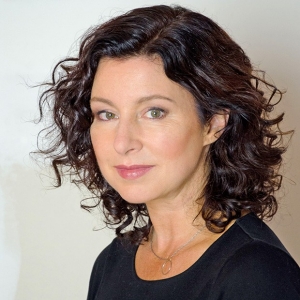The UBU theatre company’s co-artistic director (alongside UBU founder Denis Marleau) has designed the video for more than 30 UBU productions and conceived the sets for more than half of them.
Jasmin’s work has been seen on stages around the world. She has also written and directed two plays — Ombres and Les Marguerite(s) — and works as a dramaturg with some Quebec women choreographers.
She recently sat down for a candid Q&A.
At $100,000, this is the largest theatre prize in Canada. You will receive $75,000 and your protégé Max-Otto Fauteux will receive $25,000. Other than the cash prize, how important is this award?
Stéphanie Jasmin: “I met the other finalists — Itai Erdal, Camellia Koo and Alexander MacSween — during the finalists’ evening in October. They are all very accomplished and remarkable, it was an honor just to be nominated with them. When I learned that I won the prize — I was in rehearsals at the time — it was a wonderful shock for me. I am quite moved to receive this honour, especially since it recognizes my work in mid-career. I am also happy to share it with Max-Otto Fauteux. That is the meaningful beauty of this prize.”
To quote the Globe and Mail, your work “was interdisciplinary long before that was a buzzword, bringing the languages of the visual arts and film to the theatre.”
Jasmin: “It begins with my education. I was not trained in theatre. I got a degree in art history from the École du Louvre with a specialty in contemporary art before I got my BFA in filmmaking from Concordia. It was in Paris that I first developed my relationship with images, being immersed in works of art, contemplating them in reality. At Concordia, I had to commit myself to creating images and learn their own kinematic language.
But it was the mingling of many disciplines working with Denis Marleau — who was already working with visual artists, contemporary composers and people outside theatre — that enabled me to bring different energy and forms to theatre.”
How exciting is it working with Denis Marleau since joining UBU in 2000?
Jasmin: “We have worked together almost 20 years now, and the organic artistic process remains exciting and inspiring. We share that process with our creation team and every project is different, depending on the dramaturgy and poetry of the text that we explore. In the context of a creation company, I also feel like I can develop my work in a more personal and precise way over time.”
UBU created the talking mannequins for the internationally acclaimed exhibition The Fashion World of Jean Paul Gaultier: From the Sidewalk to the Catwalk that was launched by the Montreal Museum of Fine Arts (MMFA) in 2011. How did your collaboration with Gaultier come about?
Jasmin: “Jean Paul Gaultier is a big fan of theatre. Each summer he attends the Festival d'Avignon in France where, in 2002, he saw Les aveugles — a technological fantasmagory that we originally created for the Musée d’art contemporain de Montréal. He was blown away. He returned to see another of our pieces at the Festival d'Avignon in 2009, Une fête pour Boris, which featured animated mannequins. So he asked us if we would collaborate with him. What is interesting is the fact that we met through the experience of art. He also gave us a lot of creative freedom.”
Was establishing your career more difficult as a woman, and do you see yourself as a role model?
Jasmin: “I did not really encounter more difficulties because I am a woman. Rather, I think early on I suffered more from a lack of confidence... Today I don’t know if I am a role model, though some women artists have a meant a lot to me during my life. Now I enjoy taking the time to encourage young people and future artists when I have the chance to occasionally teach at Université du Québec à Montréal and elsewhere.”
How did your time at Concordia help shape you and your career?
Jasmin: “I consider my years at Concordia a very important foundation, a milestone in my life. It is where I learned to became a creator. The concept of the film as an art which predominated there, and the great quality of the teachers who were often artists themselves, allowed me to commit myself, experiment and take risks. It is where I first exposed my ideas and intimate imagination to the others. It was hugely important.
Concordia is also where I won my very first prize — the Mel Hoppenheim achievement award — at the end of my studies. That gave me a confidence boost at that moment. My years at Concordia were extraordinary and certainly helped me become the artist that I am.”


 Video and set designer Stéphanie Jasmin says Concordia “helped me become the artist that I am.”
Video and set designer Stéphanie Jasmin says Concordia “helped me become the artist that I am.”